
Pisa is a city and comune in Tuscany, central Italy, straddling the Arno just before it empties into the Ligurian Sea. It is the capital city of the Province of Pisa. Although Pisa is known worldwide for its leaning tower, the city contains more than twenty other historic churches, several medieval palaces, and bridges across the Arno. Much of the city's architecture was financed from its history as one of the Italian maritime republics.
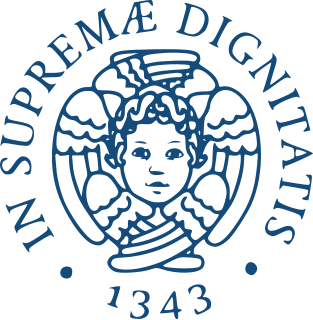
The University of Pisa, officially founded in 1343, is one of the oldest and most prestigious universities both in Italy and in Europe.
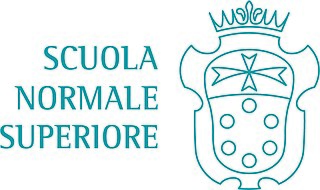
The Scuola Normale Superiore is a university institution of higher education based in Pisa and Florence, Tuscany, Italy, currently attended by about 600 undergraduate and postgraduate (PhD) students. It ranks first in Italy in the Per Capita Performance parameter of the "Academic Ranking of World Universities", second among Italian universities in the "Times Higher Education World University Rankings 2019", and first in Italy in the Teaching parameter.

Ennio De Giorgi, a member of the House of Giorgi, was an Italian mathematician who worked on partial differential equations and the foundations of mathematics.
The dottorato di ricerca is the highest Italian academic degree, the equivalent of a Ph.D.

Piazza dei Cavalieri is a landmark in Pisa, Italy, and the second main square of the city. This square was the political centre in medieval Pisa. After the middle of 16th century the square became the headquarters of the Order of the Knights of St. Stephen. Now it is a centre of education, being the main house of the Scuola Normale di Pisa, a higher learning institution part of the University.
The Sant'Anna School of Advanced Studies is a special-statute, highly selective public research university located in Pisa, Italy.
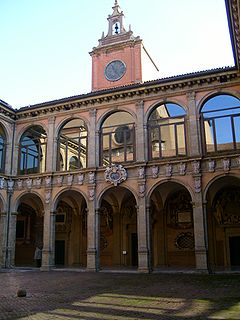
Higher education in Italy is mainly provided by a large and international network of public and state affiliated universities. State-run universities of Italy are under the supervision of Italian's Ministry of Education. There is also a number of private universities and state-run post-secondary educational centers providing a vocational instruction.

The Pisa University System is a network of higher education institutions in Pisa, Italy. The following three schools and universities belong to the system:

Palazzo della Carovana is a palace in Knights' Square, Pisa, Italy, presently housing the main building of the Scuola Normale Superiore di Pisa.
The Scuola Superiore IUSS or the "Istituto Universitario di Studi Superiori" of Pavia is a higher learning institute located in Pavia, Italy.
The Bartolozzi Prize is awarded by the Italian Mathematical Union every two years. Until 2017 it has been awarded to an Italian mathematician below the age of 34. Starting with the 2019 edition the prize has been reserved to female Italian mathematicians below the age of 40. The prize is entitled in the memory of the Italian mathematician Giuseppe Bartolozzi and is worth €3,000.
Scuola Superiore di Catania (SSC) is a learning institute in Italy. It was founded in 1998 following the model of the Scuola Normale Superiore di Pisa.
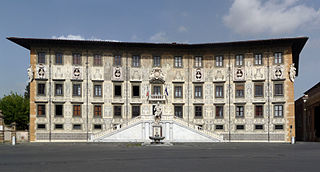
A Superior Graduate School is a completely independent institution from a legal point of view, which offers advanced training and research through university-type courses or is dedicated to teaching at graduate or post-doctoral level.

IMT School for Advanced Studies Lucca is a public research institution and a graduate school located in Lucca, Italy. It was founded in 2005 under the name of IMT Institute for Advanced Studies, where the acronym IMT stands for "Institutions, Markets, Technologies”. The School is part of the Italian superior graduate school system and its main Campus is located in the San Francesco Complex within the historic city walls of Lucca.

Aldo Andreotti was an Italian mathematician who worked on algebraic geometry, on the theory of functions of several complex variables and on partial differential operators. Notably he proved the Andreotti–Frankel theorem, the Andreotti–Grauert theorem, the Andreotti–Vesentini theorem and introduced, jointly with François Norguet, the Andreotti–Norguet integral representation for functions of several complex variables.

Alessandro Faedo was an Italian mathematician and politician, born in Chiampo. He is known for his work in numerical analysis, leading to the Faedo–Galerkin method: he was one of the pupils of Leonida Tonelli and, after his death, he succeeded him on the chair of mathematical analysis at the University of Pisa, becoming dean of the faculty of sciences and then rector and exerting a strong positive influence on the development of the university.
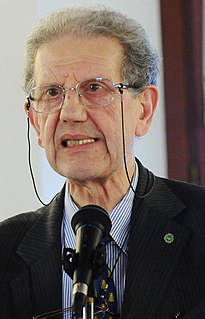
Salvatore Settis is an Italian archaeologist and art historian. From 1994 to 1999 he was director of the Getty Center for the History of Art and the Humanities in Los Angeles and from 1999 to 2010 of the Scuola Normale Superiore in Pisa.

The Liceo statale "Niccolò Machiavelli" is a high school named after Niccolò Machiavelli located in the historic Oltrarno quarter of Florence, Italy. In the 2020 academic year it offered the secondary schools Liceo classico, Liceo delle Scienze Umane, Liceo Linguistico and Liceo Scientifico. It has a student population of over 1700, making it the second largest high school in the province. Initially based in the Fortezza da Basso, the school was moved Palazzo Rinuccini, in Via S. Spirito, in 2004. The branch of the school housing the international linguistic and international scientific departments is located in Palazzo Frescobaldi, also known as Della Missione. It is one of the oldest Italian normal schools for girls and has hosted the courses of one of the two Royal Higher Education Institutes.

Giancarlo Tognoni .Giancarlo Tognoni was an Italian painter, engraver and sculptor. He was born in Pisa, but continued his studies in Florence, where he attended the art institute of the Tuscan capital. As soon as he graduated, he began his activity as a sculptor and ceramist, then coming to learn the various engraving techniques such as drypoint and etching, which will lead him to be considered one of the most important artists of Italian and foreign engravering art. Towards the end of the 1950s, he lived for some time in Paris, where he met Alberto Magnelli and Gino Severini and where, in particular, he could admire artists such as Jean Fautrier and Hartung. It is in this period, which will mark a transitory but significant season, that Tognoni approaches sign and material painting. At the beginning of the 1960s, he moved to Milan, where he began to attend the artistic circles of the city, spending most of his days at the "Spirale", the famous art printing house. It is here that Tognoni meets Giuseppe Ajmone and Franco Russoli, with whom he will benefit form a strong friendship. The one with Franco Russoli, director of the Brera Art Gallery, will be a very important partnership, as will put Tognoni in contact with the main artists of the moment, such as Piero Manzoni and Lucio Fontana and will encourage him to participate in many of the most important national and international exhibitions and reviews. This is how the first significant successes and recognitions arrive, testimonies that will accompany him later, in his intense activity, both as a painter and as an engraver, but despite which, Tognoni will remain a secluded artist, out of the big spotlights, gathered in his own creativity, as well as study and experimentation. Many of the major Italian and international critics have written about him. His works are found in public and private collections: Florence, Gabinetto disegni e stampe degli Uffizi; Vienna, Accademia Albertina; Paris, special collections of the Bibliothèque nationale de France; Pisa, Department of History of Arts, University of Pisa "Collezione Timpano"; Barcelona, Fundació Joan Miró; Milan, Musei del Castello Sforzesco, collection "A. Bertelli"; Venice, International Gallery of Modern Art Ca'Pesaro; Washington, D.C., National Gallery of Art; Pisa, Scuola Normale Superiore di Pisa Puteano palace; Lucca, National Museum of Villa Guinigi; Batavia, Illinois, Fermilab; Turin,Fondazione per la Scuola "Educatorio Duchessa Isabella della Compagnia di San Paolo"; Monaco, Staatliche Graphische Sammlung München; Oderzo, Foundation Alberto Martini; Bagnacavallo, Graphics National Center; Carrara Accademia di Belle Arti; Trieste, Revoltella Museum.
















